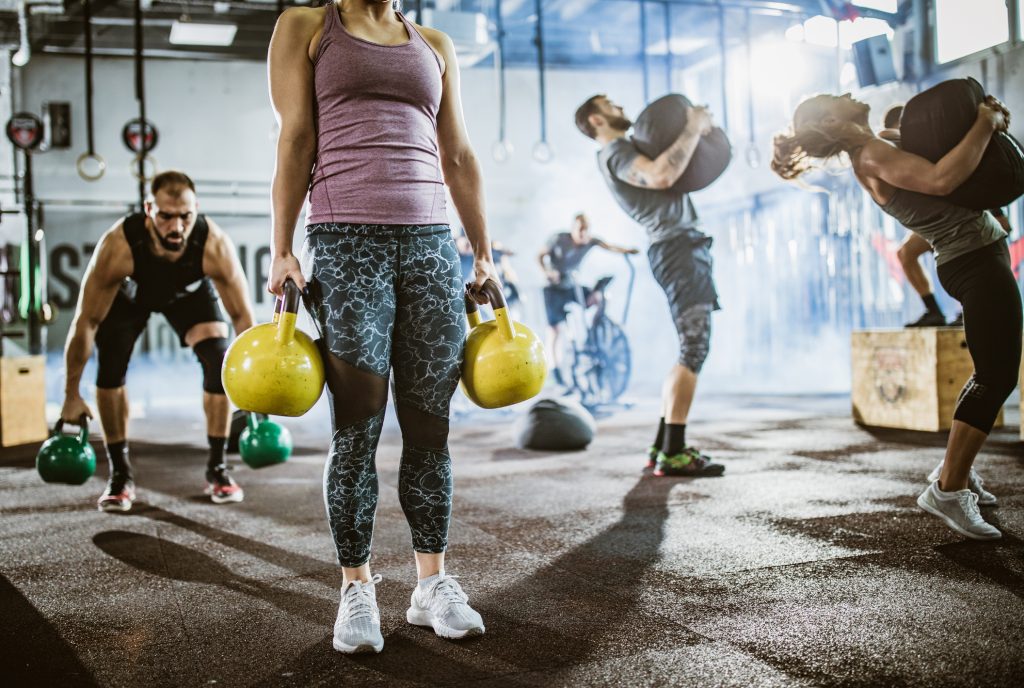The fitness industry in the United States is constantly evolving. Driven by cultural shifts, new technology, and changing lifestyles, Americans are redefining what it means to stay active and healthy. From boutique studios to wearable devices, the way people approach exercise today looks very different compared to just a decade ago. Here’s an in-depth look at the biggest fitness trends currently shaping the U.S.
1. The Rise of Hybrid Workouts
The pandemic accelerated a major shift in the fitness world: the growth of hybrid workouts that blend at-home and in-person training. Americans have embraced flexibility. Many fitness enthusiasts now mix gym memberships with digital fitness subscriptions, taking advantage of both convenience and community. Platforms like Peloton, Apple Fitness+, and Les Mills+ are thriving, while traditional gyms offer livestreamed and on-demand classes to keep members engaged.
Hybrid models allow people to tailor workouts to their schedules, whether that means attending a live spin class at the gym or logging in for a quick 20-minute strength session at home. This flexibility is expected to remain a core part of American fitness culture moving forward.
2. Wearable Technology and Data-Driven Fitness
Smartwatches, fitness trackers, and health apps are more than just accessories—they’re tools that shape how Americans exercise. Wearables like the Apple Watch, Fitbit, and Whoop provide real-time data on heart rate, calories burned, recovery, and even sleep quality.
Americans love measurable progress, and technology gives them the numbers to back it up. Data-driven insights help individuals personalize their workouts, track long-term progress, and even share results with friends or online communities for accountability. For many, wearable technology has turned fitness into a lifestyle anchored in constant feedback.
3. Functional Training Over Aesthetics
A growing number of Americans are shifting away from fitness purely for appearance and focusing instead on functional training—exercises that improve strength, mobility, and endurance for everyday life. Movements like squats, lunges, kettlebell swings, and resistance band work are popular because they build practical strength.
This trend is especially strong among millennials and older adults who want longevity, not just aesthetics. Functional training also ties into injury prevention, posture improvement, and overall quality of life, making it an inclusive approach for a wide range of fitness levels.
4. The Growth of Mind-Body Fitness
Wellness has become as much about mental health as physical strength. Practices like yoga, Pilates, tai chi, and mindfulness-based workouts are booming across the U.S. Americans are increasingly aware of the connection between stress, sleep, and overall health.
Studios offering hybrid yoga classes, meditation sessions, or Pilates with mindfulness integration are seeing steady growth. Even traditional gyms are expanding into this territory, offering recovery rooms, breathing workshops, and mobility-focused classes. The emphasis is shifting toward balance—helping people not just look better, but feel calmer and more centered.
5. High-Intensity Interval Training (HIIT) Still Dominates
Despite new approaches, HIIT remains a powerhouse trend in the United States. Quick, efficient, and adaptable, HIIT fits perfectly into busy lifestyles. Americans appreciate workouts that deliver maximum results in less time, and HIIT’s ability to burn calories, improve cardiovascular health, and build strength makes it a go-to option.
Fitness brands like Orangetheory, F45, and Barry’s Bootcamp have built their entire model around HIIT, and their popularity continues to grow nationwide.
6. Strength Training for All
Strength training is no longer reserved for athletes or bodybuilders. From teenagers to retirees, Americans are picking up weights in record numbers. This trend is fueled by greater awareness of the health benefits of resistance training: improved bone density, metabolism, and long-term mobility.
Women, in particular, are embracing strength training, breaking away from the myth that lifting makes them “bulky.” Social media platforms like TikTok and Instagram have played a major role in normalizing and popularizing weightlifting routines for all demographics.
7. Group Fitness and Community Connection
While solo workouts are convenient, community still matters. Group fitness classes—whether in person or online—are thriving because they provide accountability and social interaction. Programs like CrossFit, Zumba, and spin classes remain staples in many cities.
Americans enjoy the sense of belonging that comes with sweating it out together. Group settings foster motivation, friendly competition, and long-term consistency, making this a timeless part of the U.S. fitness culture.
8. Recovery and Regeneration
Another major shift is the growing emphasis on recovery. Fitness is no longer just about how hard you train—it’s also about how well you recover. Recovery tools such as foam rollers, massage guns, infrared saunas, and cryotherapy are gaining popularity.
Gyms are even dedicating space to recovery lounges, offering compression boots, guided stretching, and relaxation areas. This trend reflects a broader understanding of health, where recovery is viewed as essential to performance and well-being.
9. Outdoor and Adventure Fitness
Americans are also rediscovering the great outdoors as part of their fitness routines. Hiking, cycling, paddleboarding, and outdoor boot camps have surged in popularity, especially as people seek fresh air and variety beyond traditional gym walls. Adventure-based fitness not only builds endurance but also fosters a sense of exploration and connection with nature.
The Future of Fitness in the USA
The U.S. fitness landscape is more diverse and inclusive than ever before. From tech-driven solutions to holistic mind-body practices, Americans have countless options to stay active. The common thread is personalization: people want fitness experiences that fit their unique lifestyles, goals, and values.
As technology evolves and wellness becomes increasingly holistic, the future of fitness in the United States will continue to blend science, community, and creativity. One thing is certain: Americans are not just working out to look good—they’re moving to live better.



